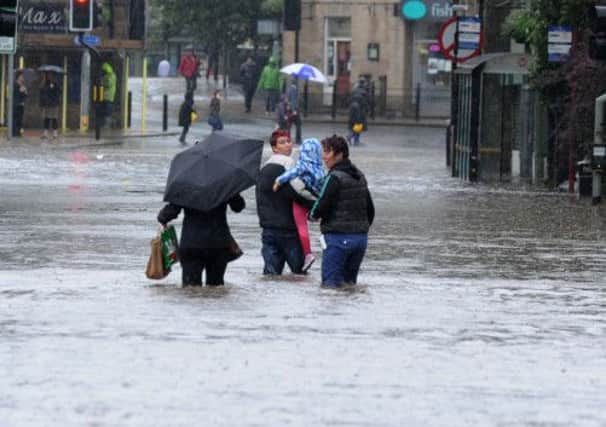£3m works ‘will not end valley’s floods torment’


Businesses and people living in the upper Calder Valley around Hebden Bridge and Todmorden have been hit hard by flash floods in recent years, with the most recent deluge coming at the end of July when a torrent of water tore through the village of Walsden, near Todmorden.
The flood caused severe damage to roads and around 12 homes, with more than 10 businesses affected and, in total, 90 properties sustained some level of flood damage.
Advertisement
Hide AdAdvertisement
Hide AdCalderdale Council and the Environment Agency have drawn up a £3m programme of works in a bid to reduce the impact of – but not prevent – future flooding.
Flood defences at more than 20 locations will be improved as part of a two-year programme.
One of the first areas to be targeted as part of works programme will be Mytholmroyd where vegetation in the river channel will be cleared.
Strengthening of defences at Jumble Hole Clough and Woodland View at Eastwood, Todmorden, will also start before the end of the year.
Advertisement
Hide AdAdvertisement
Hide AdOther locations where designs are being developed include Walsden, which was badly hit by flash flooding at the end of last month, Dobroyd Clough at Todmorden and Erringden Hillside at Hebden Bridge.
Flooding hotspots on the main A646 road through the upper Calder Valley will also be targeted.
The Environment Agency has completed inspections along Walsden Water to assess damage caused by the flash flood on July 29 when 17 millimetres of rain fell in just 15 minutes.
The Agency is also looking at what else will need to be done to strengthen flood defences in the area.
Advertisement
Hide AdAdvertisement
Hide AdCalderdale Council has commissioned a study to investigate solutions to the flooding that took place at Kershaw Road and Clough Road in Walsden in July.
Kershaw Road was destroyed in last month’s flood and Calderdale Council teams spent two weeks helping residents and businesses with the clean up.
Calderdale Council’s cabinet member for economy and environment, councillor Barry Collins, said investigations were taking place to determine what future works were needed to make the area better prepared for future downpours and flooding incidents.
He said: “Although Clough Road isn’t an adopted highway, we have cleared away uplifted tarmac and brought in stone to give temporary access from the railway along Clough Road to Kershaw Road.
Advertisement
Hide AdAdvertisement
Hide Ad“The study to investigate solutions will determine the extent of future works required. A recommendation will be put to the council’s cabinet as soon as the facts are established.
“It’s really important that residents and businesses know what to do to prepare for future flooding and what to do after a flood. The council and the Environment Agency have useful information, advice and guidance on their websites.”
Oliver Harmar, the Environment Agency’s flood risk manager for South and West Yorkshire, said: “The EA and Calderdale Council are working together with local flood groups and other organisations to develop affordable and technically feasible solutions to deal with flooding from all sources.
“We are drawing up detailed designs for a variety of flood alleviation measures across the Calder Valley.
Advertisement
Hide AdAdvertisement
Hide Ad“Local knowledge and the feedback we have received from the Calder Valley communities worst affected by flooding means we can target specific locations where the money spent will have the greatest benefit.”
Following July’s flood in Walsden locals called for work on defences to “slow down” flood water as it came off the hills.
Walsden councillor Andrew Hartley said he doubted that floods could be prevented entirely but he favoured investigating whether disused reservoirs could be used to store flood water during heavy downpours.
His suggestion that disused Ramsden Clough reservoir could be used was dismissed by owner United Utilities which said “ground conditions” meant it was no longer suitable.
The Environment Agency’s list of works includes debris removal from culverts, a £37,500 scheme to realign a culvert at Warland Bridge, Walsden, and gravel removal at Walsden Water.